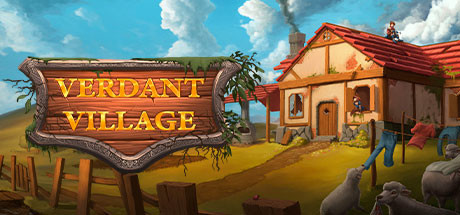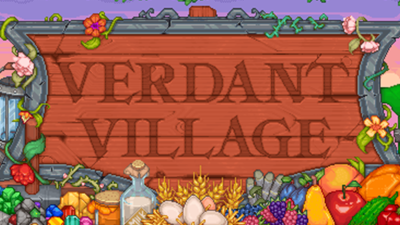They Washed Me Ashore Mac OS
Of and in ' a to was is ) ( for as on by he with 's that at from his it an were are which this also be has or: had first one their its new after but who not they have –; her she ' two been other when there all% during into school time may years more most only over city some world would where later up such used many can state about national out known university united then made. Endeavors are physical found in programming for ever and a day. Indeed, even Microsoft Windows and Mac OS X are regularly get hold of to arrangement as soon as basic adventures. In the matter that you don’t refresh your framework you will depart it access to a wide range of assaults that could anyhow or inconsistent have been stayed away from.
Washed Ashore on the PBS NewsHour. Turning Plastic Ocean Pollution Into Sea-saving Art: A Traveling Exhibit
At the Smithsonian’s National Zoo, a massive exhibit made entirely of plastic pollution fished from the Pacific is on display. Called “Washed Ashore: Art to Save the Sea,” it features 17 sculptures, from jellyfish to shark. The lesson? The ocean’s deadliest predator is trash. NewsHour’s Julia Griffin pays the plastic sea creatures a visit.
Published: July 12, 2016
Discover Arkansas Washed Ashore: Art to Save the Sea
Watch a tour of Washed Ashore’s new indoor exhibit, “Reef at Risk” along with “Stella the Sea Horse” and “Greta the Great White Shark.” Enjoy swimming through a sea of jellyfish with a couple of newscasters…
Published: August 21, 2019
Steve the Weedy Sea Dragon – at Point Defiance Zoo and Aquarium
One of our newest pieces, the Weedy Sea Dragon had it’s debut recently at Point Defiance in Tacoma, Washington. See how we build our art work and meet Angela Haseltine Pozzi, Founder, Lead Artist and Executive Director of Washed Ashore.
Published: April 28, 2017
The Making of “Turtle Ocean”, Now on Display in the Sant Ocean Hall of the Smithsonian National Museum of Natural History in Washington DC.
“Turtle Ocean”, a 12 foot coral reef featuring an endangered hawksbill turtle swimming over a colorful coral reef is featured in the museum’s Sant Ocean Hall. Watch Angela Haseltine Pozzi create the art piece in her studio.
Published: July 25, 2016
At Smithsonian’s National Zoo in Washington DC captivating Animal sculptures recently illustrated the Tragedy of Ocean Pollution
The National Zoo in Washington, D.C., is home to about 1,800 animals, representing 300 species. But throughout the summer, visitors can also see other kinds of creatures there. They are larger-than-life animal sculptures that speak volumes about a global issue — the massive plastic pollution in our oceans. VOA’s June Soh takes us to the zoo’s special exhibit, Washed Ashore: Art to Save the Sea.
Published: June 28, 2016
Washed Ashore: New Exhibit at National Zoo in Washington DC Showcases Ocean Pollution
The sculptures are bright and beautiful but they serve a purpose: Informing the public about the millions of pounds of trash that wind up in our oceans. News4’s Wendy Rieger takes a look at the “Washed Ashore” exhibit on display at the National Zoo.
By Wendy Rieger

They Washed Me Ashore Mac Os 11
Published: May 28, 2016
KOBI – Washed Ashore Part 1
A brief video history of Washed Ashore – what we do and why we do it.
Published: April 11, 2013
KOBI – Washed Ashore Part 2
See details of how we make our artwork and listen to some music made with our interactive sculptures – “Buoy Beat ‘n Bop.” Watch our volunteers in action.
Published: April 11, 2013
Oregon Art Beat
The Washed Ashore Project was featured on OPB’s Oregon Art Beat. Tons of plastic has been pulled out of Oregon’s Pacific coastline and turned into large scale-sculptures. These unique pieces speak to the issues our oceans face.
Published: October 17, 2013
They Washed Me Ashore Mac Os Catalina
KPBS – Washed Ashore Project
KPBS arts reporter Beth Accomando takes a tour of the Washed Ashore Exhibit at the Living Coast Discovery Center with artist Angela Haseltine Pozzi.
Published: May 11, 2012
When I could house no more, I began photographing the ephemeral. Leaves and twigs, French-knot like marks made by crabs on the sand, footprints of seagulls and crows and even tracks made by human feet. All that had made their imprint on the beaches and brought leeward by rising tides. I was fascinated by what lay on the sands and the vibrancy of life there. Where, whatever had been thrown into the aquatic deep, returned. To the same spaces or sometimes in far off places – all connected just by the water that buoyed them inland or back into her depths. The aqueous-ness that enjoins us all.
As time passed by and the concept of a body of works titled Washed Ashore evolved. To embrace, more than just the physical facets I could put into a bag and store, I started likening these to ideas that we dump into the annals of consciousness. Which, until and unless they are examined, pared down and laid to rest with cognizance, return again and again, drawing attention to themselves in myriad ways. Our learned behaviour, subconscious patterns, repetitive thoughts and actions, from previous life-times or life-events, all started to emerge as ideas “washed ashore”. The premise was getting larger than intended so I focussed by telling stories inspired by the stones and shells I was crocheting. In the manner of looking at ideas coming into the horizon of my own consciousness.
One clamshell had its centre gouged out, as if its heart was missing. I rummaged through my stash for a colour that fitted my mood and which the structure could bear. It was a fiery, bright orange that seemed to want to speak, for both of us.
I had been having a difficult morning. The carpenters were still at work in my apartment. The plumber promised but hadn’t come to complete his task. My lease was to expire in twenty-five days and the thought of being homeless unless all the work was done within a week or so, was creating untold tension. I knew I should have faith in life’s unconditional support, but habitual stress tendencies were getting the better of me. I hooked the twine around and between the sides of its gouged-outness, trying to camouflage the gaping hole, at its very core. Asking myself what I’d hoped to hide. If it even needed the filler triangle which I’d made, in my distracted state.
Could I protect by giving it something to camouflage the glaring emptiness? With my cloth, could I make up for the missing core? And slowly, as the shell was clad, its hole repaired without disguising its torn-out-ness, it fashioned itself into a pendant. As if to speak of all those places in memory where our hearts have been broken and never quite healed. Reminding of beauty in truthfully going over and over the stuff that seems to have been wrung out.
Draping the acquired molluscs and flints, transforming them into something beyond the state they were found in, also became suggestive of the idea of covering and masking their starkness and vulnerability. This in turn, made me question why we clothe our bodies, hide our lies, our weaknesses and more.
Veiled as anger, shyness, fear, depression, and almost the entire gamut of human emotions that hold us back from realising our fullest potential, ignominy has become almost fundamental to our essence. But rarely recognised as such. Like the conches, clams, crustaceans, mussels and rocks, we don’t come into the earthly realm carrying the stigma of disgrace. But, living in the world, not finding acceptance, being chided and derided, abused and ignored, humiliates us from an early age. This indignity has become subversive and many don’t even recognise the impression, often mortified of feeling shame.
In The Scrunchy, the found items were left out of the initial work with 0.3mm copper wire. I let the material lead the way and the wire-work was far from finessed. Partly because of my inexperienced hands and partially because of the nature of the resource. The gawky looking crochet—much as it was an achievement in my eyes, made me want to use cotton to finesse the edges. Ageing copper turns blue-green and my hands instinctively gravitated towards this hue. But then, as I worked around the wired rim, it seemed a tad too much colour. The yarn-count was thick so I wasn’t getting the delicacy of line I sought. A 30’s count off-white was perfect, except that my impatient hands couldn’t work around the copper gauge/basket-like form, fast enough. So when the time came to add another layer by puckering the copper lace, I reverted to the aquamarine hue.
As I hooked wire and then string, I pondered on the mirror which this process created of the human experience. Thread is infinitely malleable. And just like the spirit of life, it’s possible to do anything with it. Wire seemed more like cognizance, which needs coaxing and coercing and a spiritual practice (whatever that may be for different folks) to keep it going. The rigour of our desires is often too much to handle, pulling us down with gravitas. And that’s what the stone placed within this quasi brain-like form, suggests to me – a mind weighed down. I think the intellect is equal to the spirit, in that it is formed off this essential component of existence but, has garnered a miserable reputation in our new age.
I had decided to take the day off from house renovation matters because my psyche was heavy and laden. I interlaced the thread with copper, letting the emotion just spill out through the rhythm of hooking—no fetters, no questioning—just the mood holding sway. In not quelling the ego’s angst, it struck me that much, if not all art, poetry, music and other cerebral inventions have emerged from the solemnity of survival, and would not have come forth in a world, existing in the lightness of being. The mind had its way that day, affirming that it is misunderstood and needlessly maligned.
I gifted this wire and cotton paper-weight to a friend. Suggesting that he may like to open and scrunch it, pull or push it in different ways. Working with it, as dictated by his feelings and to note the effect. Doing so, especially on a stress-filled day.
Author

Gopika Nath is a textile artist and writer preoccupied with the idea of personal histories and how they influence one’s artistic practices and creative expression. Personal histories are not isolated. Infinitely interlaced—culturally, politically, socially, economically and otherwise, they make-up the different templates of an expansive chronicle of human life. In her quest to construct such a “narrative quilt”, she invites artists and writers and anyone else interested in sharing their stories, to contribute to the Personal Threads Project. Some stories, (tagged as “Personal Threads”) have been uploaded on gopikanathstitchjournal.blogspot.com
✿
Like the article? Do think about joining the conversation by leaving a comment below. Authors (and fellow readers) are interested to know what you think. And if you haven’t already, consider becoming a subscriber.